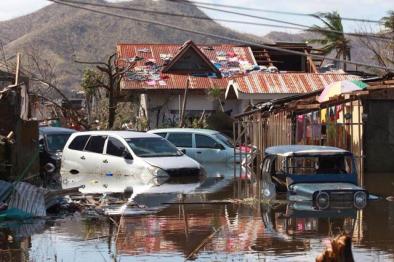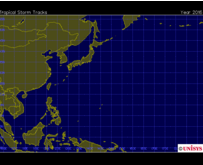Science Source
Climate Mechanism for Stronger Typhoons in a Warmer World
- Uses an empirical framework to explain physically why observations support a tight connection between increasing ocean warmth and the increasing intensity of supertyphoons in the western North Pacific
- Shows that the energy needed for deep convection is on the rise with greater heat and moisture in the lower tropical troposphere but that this energy remains untapped when air pressure is high
- Finds accordingly, that tropical cyclone formation is becoming less common, but those that do form are likely to reach extreme intensities from the discharge of stored energy
- Finds that these thermodynamic changes to the environment most significantly influence the upper portion of extreme typhoon intensities, indicating that supertyphoons are likely to be stronger at the expense of overall tropical cyclone occurrences in the western North Pacific
Related Content
Science Source
| Nature
Coastal flooding by tropical cyclones and sea-level rise
Jonathan D. Woodruff, Jennifer L. Irish, Suzana J. Camargo
Headline

Mar 24, 2016 | TIME
The Philippines Is the Most Storm-Exposed Country on Earth
Headline

Mar 24, 2016 | Weather Underground
Haiyan's Storm Surge: A Detailed Look
Real Time Data

Mar 16, 2016 | Unisys
West Pacific Tropical Storm Tracking


